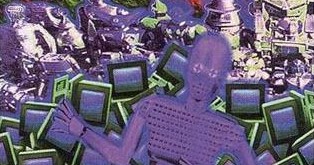
| last update 10.11.2025 21:34 | |||||
|
| Top Runners' Quarterly |
| Frisky's Corner |
| Neal's Last Words |
How to Stage a Demo
I have found that in explaining the game, the following sequence works quite well: 1) Start with the Corp deck: Explain the starting setup, and the concept of actions. I usually say, "The Corp gets four actions per turn, but the first must always be to draw a card." The details of why this is not technically an action I save for later. 2) The first and most important thing is scoring agenda. It's what the game is all about. So I play Corp turns, one after the other, just to place an agenda, advance it, take bits, etc., until it is scored. I say, "When the Corp has scored 7 agenda points this way, it wins the game." 3) So... what does the Runner player do to stop this? I then explain that he or she also gets four actions, but none are prescribed, and that there is a new type of action: the run. With a partially advanced Corp agenda on the table, I demonstrate the effects of a run on R&D, HQ, and the subsidiary data forts. I point out that if the Runner scores 7 agenda points this way, he or she wins the game. 4) Then it's back to the Corp. How does it prevent the Runner from scoring agenda? Now it's time for the concept of ice, rezzing and the full run sequence (approaching ice, rezzing or not, effect of subroutines). It helps to slap down some non-icebreaker program and talk about trashing programs, Net, meat, and brain damage, and "end the run." I leave out trace ice at this point (that comes later). Flatlining as a method of Corp victory gets mentioned here. 5) So how does the Runner get through this ice? Now it's time for icebreakers. With icebreakers come MU restrictions, how to pump strengths and break subroutines, the calculation of bit costs, etc. 6) Finally I get to traces and tags, base link, and increases to link.
This completes the basic concepts. You will still need to talk about nodes and upgrades, chips and decks, and a whole bunch more, but
I've found that this back and forth sequence makes it clear at each step why we are talking about the concepts we are talking about. The
rest is a matter of reading the cards.
|
|
